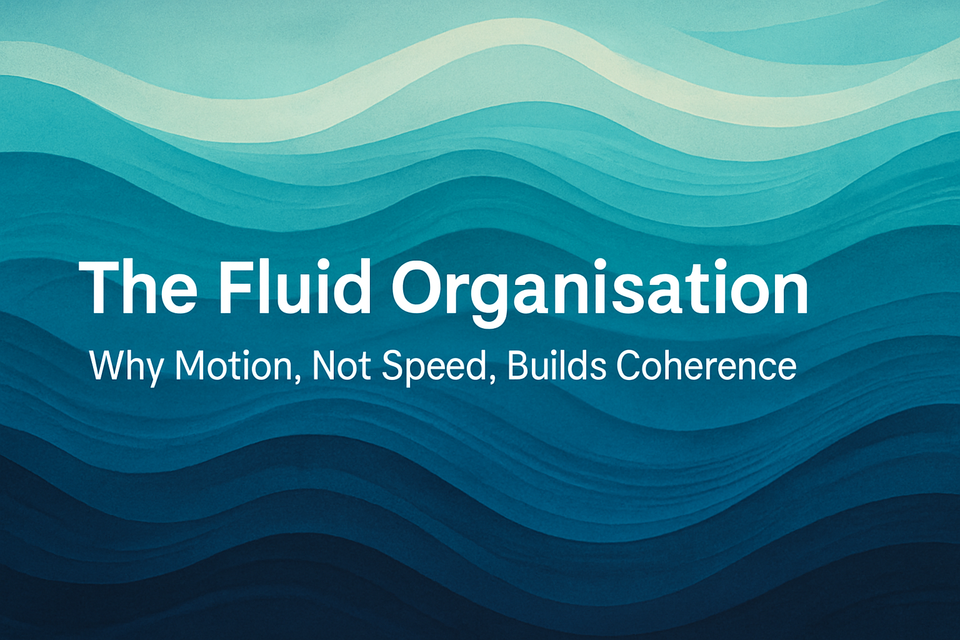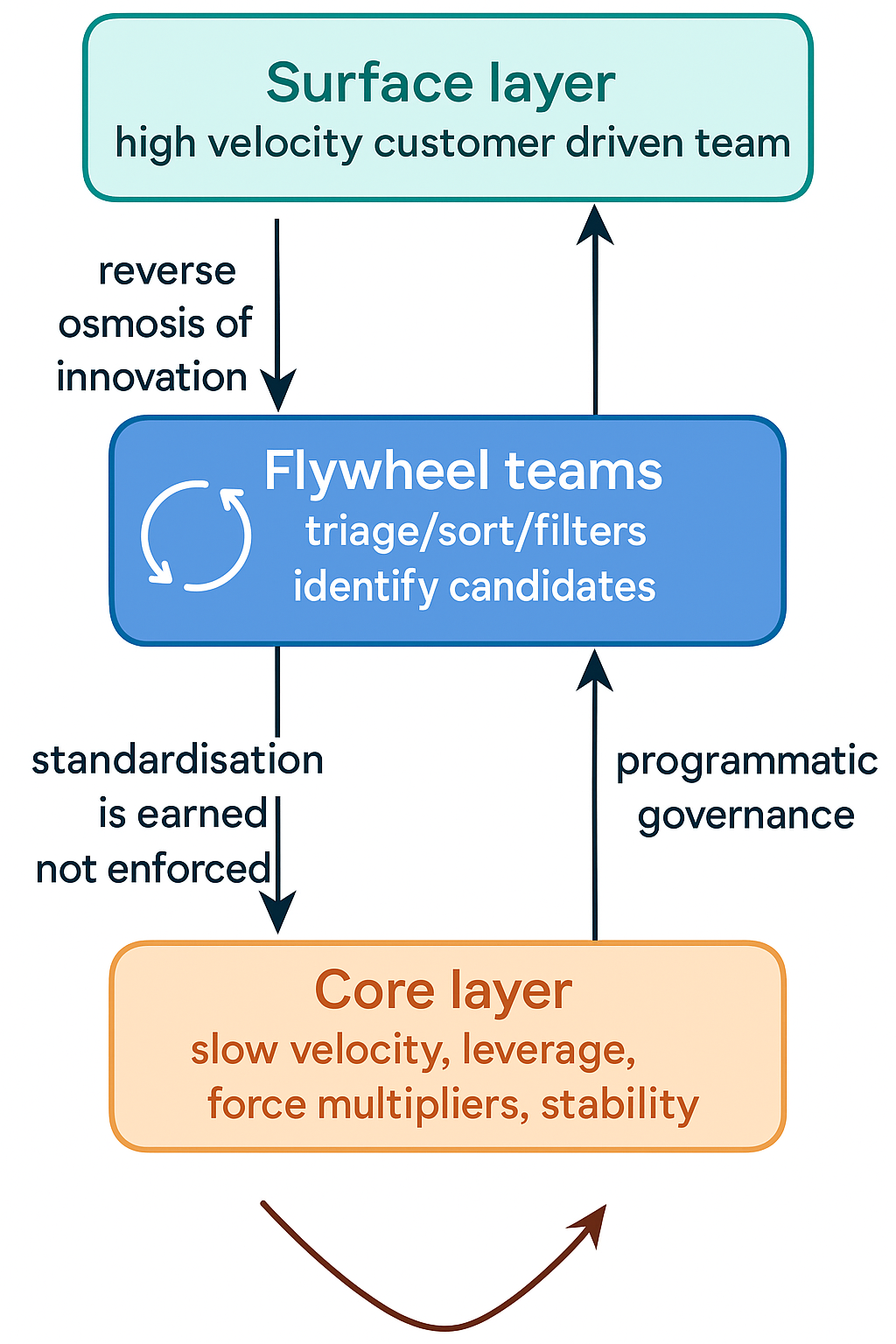The Fluid Organisation: Why Motion, Not Speed, Builds Coherence

Most organisations are built around control, not coherence. They attempt to align teams by synchronising their delivery cadences: identical sprint lengths, shared quarterly goals, simultaneous go-live pressure. This operational sameness is meant to promote unity, but in practice, it often results in friction, fatigue, and systemic failure.
Nature does not function this way. Systems in the real world do not move in lockstep. They flow. They pulse. They adapt.
The modern organisation needs less choreography and more coherence. Less uniformity of pace, and more integrity of motion.
The Hidden Cost of Uniform Velocity
In many companies, velocity has become a proxy for alignment. Leaders attempt to resolve delivery conflicts by forcing all teams to move at the same speed. But what this overlooks is the fundamentally layered nature of organisations:
- Surface teams must respond quickly to customer signals and market fluctuations
- Core teams are custodians of stability, safety, and strategic constraints
- In between, a third layer is needed, not to glue these systems together, but to translate, filter, and adapt
This is the Flywheel: a dynamic interface layer that enables motion to happen at different speeds, with shared direction and feedback.
Two common organisational problems it helps resolve are:
- The strain caused by treating infrastructure and product teams as equivalent in tempo or planning horizon
- The failure to scale platform investments due to lack of adoption, governance, or feedback integration
Introducing the Fluid Organisation
The Fluid Organisation is a layered model comprising:
- Surface: high-velocity, learning-driven, market-facing teams
- Flywheel: the transduction engine that absorbs signal and returns capability
- Core: long-term, foundational systems of record and constraint

The Flywheel is not a delivery team. It is not an abstraction layer. It is the part of the system that metabolises change. It separates the wheat from the chaff, identifies what deserves to be standardised, and gradually absorbs stable signals into the Core.
The number of Flywheel teams should grow or shrink depending on organisational tension. This is not a static layer. It is the continuously variable transmission of the organisation, scaling, modulating, and distributing motion across layers.
Metrics of Organisational Flow
To make the Fluid Organisation measurable and repeatable, the whitepaper introduces several key metrics:
- Org Re: a pressure analogue that relates delivery rate to interface maturity
- Shear Index: a measure of how often dependency shifts create delivery friction
- Absorption Ratio: the percentage of Core output reused by Surface teams
These metrics help reveal whether flow is real or only declared, whether reuse is truly occurring, or whether velocity is masking fragmentation.
Who Should Read This
This work is designed for those who operate at the boundary of architecture and execution:
- Staff and Principal engineers
- Platform and Developer Experience teams
- Engineering leaders struggling with scale, reuse, and delivery fragility
- Organisations that want to balance autonomy with long-term coherence
If you have ever felt that alignment by velocity is a trap, this whitepaper is for you.
Read the Full Paper
You can have access to the Full PDF or access the root Github project.
I Welcome Discussion and Feedback
This is not a doctrine. It is a pattern. It is intended to be challenged, extended, and adapted.
If your teams already operate with layered motion, if you have solved these problems in other ways, I would be grateful to learn from your experience.
Thank you for reading.
Marc Daniel Ortega Author, The Fluid Organisation
Join our community on the The Leadership Chronicles blog space.





Member discussion